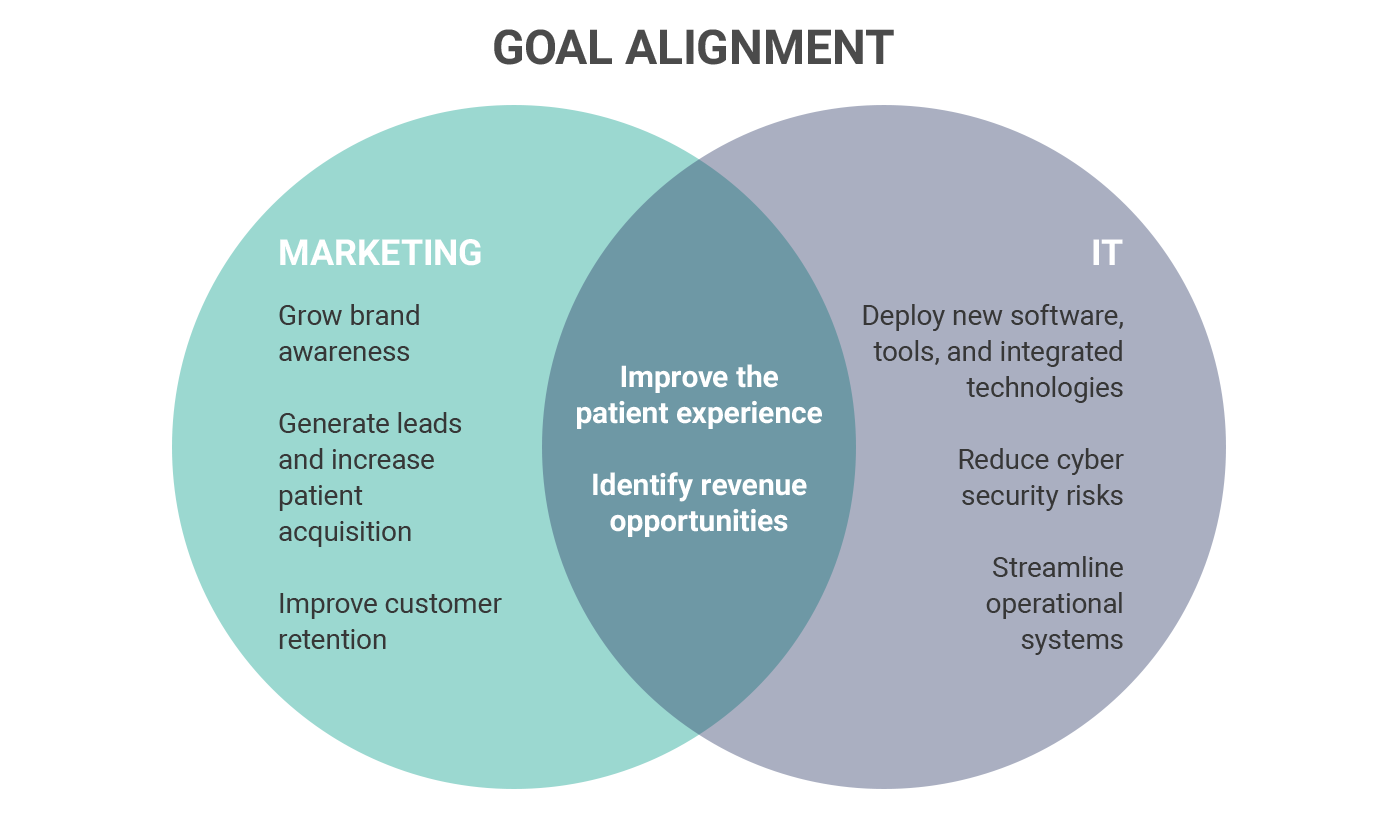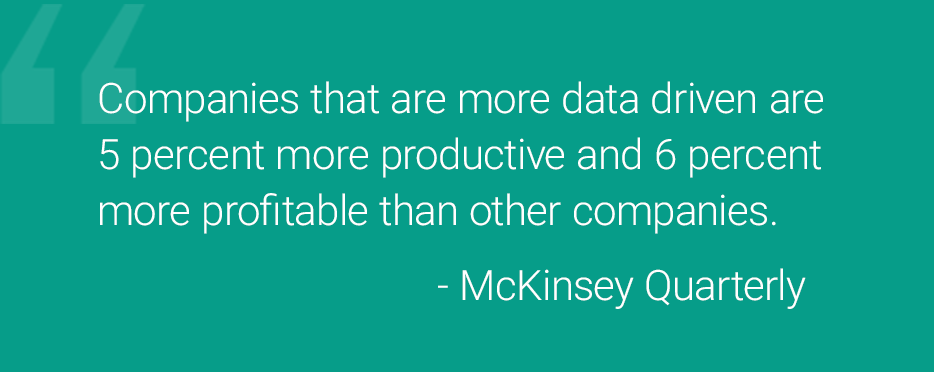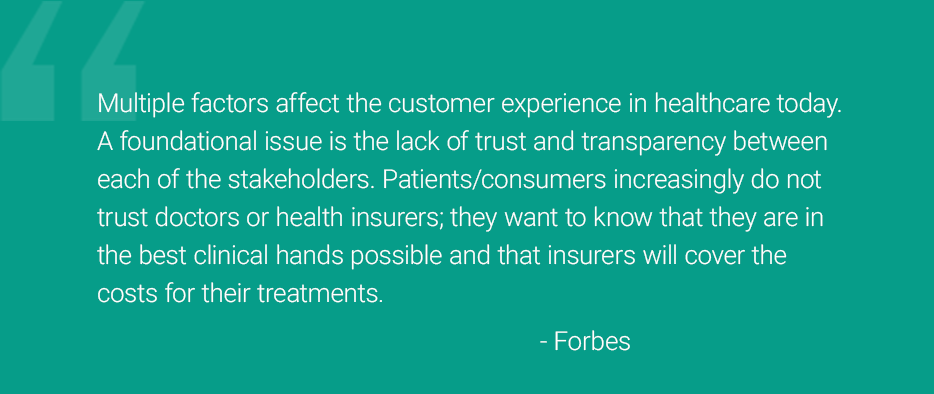Like any consumer, patients want ease-of-use, digital convenience, and superior service. They’re accustomed to the on-demand, one-click shopping experience from retailers like Amazon. They all, young and old, have internet-enabled supercomputers in their pockets. Exceptional customer service is no longer a pleasant surprise, but an expected part of the brand promise.
Table of Contents
What does this look like within healthcare? Transparency about treatment plans and associated costs, for one. Easy access to relevant information, appointment setting, even physician communications within the digital channels that patients prefer, for another. And finally, continuity of care between nurses, physicians, and different departments so that patients don’t have to rehash conversations they’ve already had.

Delivering on these kinds of experiences, as it turns out, hinges greatly on data. It’s through rich, comprehensive data that healthcare companies can identify opportunities for improvement, for proactive service, and for superior experiences overall. This new consumer paradigm, powered by data-driven digital experiences, has created an inextricable link between marketing and IT.
At least it ought to.
Why CMOs and CIOs Must Find Common Ground
This calls for much more collaboration between two important members of organizational leadership that, at least historically speaking, have shared little operational overlap. Indeed, to meet broader growth objectives and connect more meaningfully with healthcare consumers, chief marketing officers (CMOs) and chief information officers (CIOs) must now work together.
The strategy and creativity of CMOs is no longer enough on its own; the ability to extract growth opportunities from an ever-growing pool of data and the analytic expertise of the CIO—alongside important IT architecture—is essential. And the two are not mutually exclusive.
According to McKinsey, data-driven companies are five percent more productive and six percent more profitable. That’s because the call of the day today goes beyond just allocating massive spending on data. Instead, healthcare companies must find ways to extract important patient insights, demonstrate ROI, and deliver more personalized patient experiences.
They can’t afford not to, especially when their collaboration results in greater margins and more loyal patients. And it all hinges on how well the CMO and CIO—two functions that were once strange bedfellows—can collaborate.
“Many CMOs are waking up to the fact that IT can’t be treated like a back-office function anymore; rather, the CIO is becoming a strategic partner who is crucial to developing and executing marketing strategy.” –McKinsey
Overcoming Stubborn Organizational Obstacles to Collaboration
Yet many healthcare organizations still lag behind due to the same organizational silos that have long prevented CMOs and CIOs from coordinating more directly and closely in the first place. This is often due, for instance, to departments being physically located in different places on a campus or across the country. Sometimes, different practices have their own dedicated marketing and IT functions.
The stated goals and objectives of IT and marketing are often disunified, too. Whereas healthcare marketing remains solely focused on growing brand recognition and generating leads, for instance, IT has its sights on streamlining operational systems, reducing cybersecurity risks, and executing IT change management.

These organizational silos tend to create a lack of understanding of each department’s priorities, responsibilities, and resource constraints. It’s here that we hear tell of those entitled marketing heads making demanding requests for the IT department to implement within unrealistic timeframes. For whatever reason, these marketing folks overlook or misunderstand the need for IT to ensure that patient data is protected by thoroughly vetting digital technologies and software.
On the flip side, we sometimes hear of the uncooperative IT department that drags its feet because it’s skeptical about the effectiveness of marketing campaigns or techniques. “Marketing doesn’t really need that information” is the common refrain. Or, “Marketing can wait because we have other, more important things to do.”
This all needs to change, especially in a space like healthcare, where silos are particularly pervasive. Here, the lack of connection and collaboration between IT and marketing can result in glaring inefficiencies (patchwork EHR systems are a good example).
It Starts with Building the Relationship (and That Takes Work)
The first step toward bridging these organizational silos is for CMOs and CIOs to build a more collaborative relationship.

Here are a few high-level starting points for the bridge-building:
- Align around the broader organizational goals of growth, revenue, and efficiency that are shared broadly by the CIO and CMO. Determine and document—collaboratively—the decision-making responsibilities in key functions for each department as they pertain to these goals and KPIs. You might call this rowing in the same direction.
- Bridge the gap between teams, not just leadership, through things like quarterly off-site meetings. This is where leadership groups can review and report on shared goals and KPIs, shell out recognition, and find creative ways to incorporate fun and bonding time for both teams.
- Create open communication channels and encourage transparency by coordinating teams on the operational level. First of all, are key marketing and IT systems integrated and talking to each other? Are IT and marketing teams working together on projects able to leverage collaborative project management tools, such as Basecamp, Trello, and Monday? What about communication tools like Slack and Microsoft Teams to improve communication for teams based in different locations?
- Learn the language of your counterparts because marketing and IT, from the top level down, both speak different professional languages. It takes take time to understand each other’s jargon, lingo, KPIs, and objectives. Yet, this is the language that can be socialized by CMOs and CIOs.
- Share successes and reward successful collaborations, especially people who embody the team’s values and goals. It means a lot when the CMO and CIO present a unified message and recognize each other’s role in successful projects, and share these wins across the organization.
- Connect data and marketing suites so that established data pipelines and reporting are accurate, accessible, and appropriately shared with stakeholders.
4 Objectives That the CMO and CIO Can Align Around
When discussing the how of CMO/CIO collaboration, it’s important to start with the patient experience:
- Are our patients happy?
- What kind of experience do healthcare consumers really want?
- How can we work together to improve the patient experience?
- What new tools, technologies, and apps might improve the patient experience?
Though the answers, strategies, and outcomes might vary from organization to organization and team to team, starting with the patient can lead to highly effective strategies that have the buy-in and participation of both marketing and IT.
1. Simplify and integrate technology systems
Just because new apps and software systems exist doesn’t mean you need them all. Instead, take a critical look at your technology systems and conduct a thorough audit. It’s important to identify which tools enable you to improve the patient experience, as well as the tools that potentially detract from it.
More specifically, focus on simplification and integration when evaluating your technology stack. Namely, what does the patient experience look like for each of these technologies? What are consumers saying about them? Are there multiple systems and apps that they need to log in to? How do they schedule appointments? Are they sent reminders?
Secondly, identify where the data is located and how to access it. Legacy data management systems can be cumbersome, and they don’t typically play nice with modern tools. Plus, disparate systems make it difficult to identify health-related patterns and trends. If CMOs want to deliver exceptional patient experiences, they need to deliver smart marketing campaigns that are backed by this data. Data that is difficult to access makes real-time decision-making and timely campaigns impossible, something they’ll probably need the CIO’s help with.
2. Reduce the administrative burden on doctors and physicians

How can stressed, burned-out, ill-informed doctors deliver high-quality care to patients? Doctors have reported stress and burnout due to increasing administrative requirements due to poorly planned EHR systems, for example. They may feel rushed and hurry through appointments. This results in a poor experience for the healthcare consumer.
And this stress can manifest in the quality of the care they provide to healthcare consumers.
The CMO and CIO should focus on technologies that will reduce the administrative burden doctors carry. Again, simplification is a good guiding principle. Eliminate paper forms, for one. The healthcare consumer should be filling out their information electronically and this process must seamlessly integrate with the EHR system. Implementing voice-technologies to capture notes during patient visits, to use another example, will allow doctors to focus their attention on what matters—the patient.
The point is, a doctor’s time is valuable. Instead of spending hours updating electronic records, they should be spending time with patients. And creating these experiences should be a shared responsibility and objective of both the CMO and CIO.
3. Implement innovative care options
CMOs and CIOs must also be gatekeepers for new treatment options made available by new technologies, widespread internet access, and artificial intelligence. Today, when someone feels sick or needs a referral, they have digital options beyond the traditional visit to a primary care physician.

More practices are offering telemedicine services, for example, where people can receive medical care and advice from the comfort of their homes. This is particularly helpful for mobility-impaired individuals, the elderly, and even new parents.
App developers seeking to revolutionize medicine are developing new diagnostic apps and technologies that use AI-powered platforms. The Apple ECG app, which monitors cardiac rhythm and sends an alert if there are irregularities, is another example.
Finally, within the field of dermatology, researchers are developing skin cancer diagnosis software that uses artificial intelligence to identify malignant moles. Instead of trying to fit an appointment into their busy schedule, people can evaluate questionable moles with an app. It’s yet another example of elevating the patient experience—and alleviating the burden on physicians—by eliminating unnecessary office visits.
4. Personalize the healthcare experience
Personalization is such a big part of the modern consumer experience, especially within the healthcare space. Personal, tailored experiences increase patient satisfaction and brand loyalty. And because the CMO and CIO have access to tremendous amounts of data and new technologies, they have an equally tremendous opportunity to use these advantages to create and tailor personalized patient experiences.
The CMO, for their part, can better understand the needs and desires of their healthcare consumers through things like cognitive analytics, machine learning, and predictive marketing tools. Integrating EHR systems, CRMs, and marketing automation software will allow marketers to deliver real-time offers and promotions, and unique services to the healthcare consumer.
And none of these complex data pipelines and integrations are possible without extensive collaboration with the CIO.
Related: Watch the Roundtable “Driving Growth with Better Patient Experiences”
Make Improving Patient Experiences the Starting Point

This kind of digitally enabled, integrated, and innovative medical care is only good if it can be implemented. IT has to set up these new systems and tools, including mechanisms for capturing and storing data from each new interaction these experiences create.
Marketing, for their part, will need to not only raise awareness about and promote new experiences to encourage adoption, but closely monitor what’s working, what’s not, and to identify opportunities for continued revenue generation and growth.
Again, the modern healthcare experience is changing, shaped directly and considerably by new digital technologies. As organizations adapt to meet this demand, big initiatives around patient experiences—and the data that drive them—will take center stage. And their success will depend on the ability of CMOs and CIOs to bridge the gap.
Learn more about our business intelligence solutions and how we can help with marketing integration.



